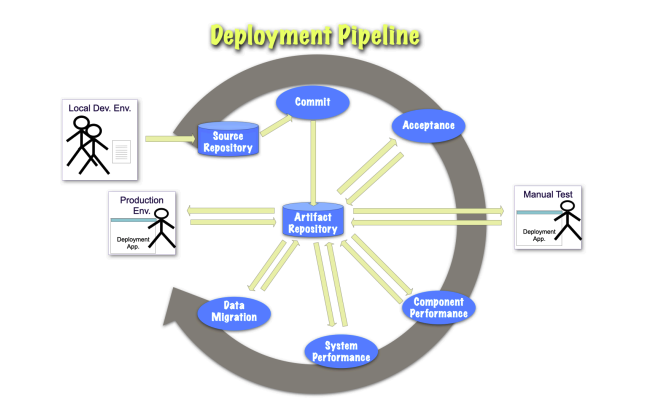
AWS has been deprecating several services and runtimes recently. As we’ve seen with the discontinuation of our beloved CodeCommit and other crucial services, Go1.x is no longer supported for AWS Lambda functions.
If you try to deploy most of the outdated tutorials, you might encounter errors like this:
Resource creation Initiated CREATE_FAILED AWS::Lambda::Function DemoFunction Resource handler returned message: "The runtime parameter of go1.x is no longer supported for creating or updating AWS Lambda functions. We recommend you use a supported runtime while creating or updating functions. (Service: Lambda, Status Code: 400, Request ID: 81f1f708-0a7a-40d0-8442-b9c16510d01f)" ROLLBACK_IN_PROGRESS AWS::CloudFormation::Stack lambda-go-gorilla The following resource(s) failed to create: [DemoFunction]. Rollback requested by user.
The key takeaway is that the only constant in software is change. However, there are sometimeless principlesthat we should always keep in mind:
To address this issue, I decided to create an up-to-date repository with all the infrastructure needed to deploy a Go application. There are two options available:
You can GitHub find the repository here.
Immutable infrastructure allows us to declare what we want at a higher level and ensures that development and production environments remain as close as possible. For example:
CompoundingFunction: Type: AWS::Serverless::Function Metadata: BuildMethod: makefile Properties: FunctionName: CompoundingFunction Architectures: ["arm64"] Handler: bootstrap Runtime: provided.al2 CodeUri: ./functions/CompoundingFunction/ MemorySize: 512 Timeout: 10 Environment: Variables: COMPOUNDING_TABLE_NAME: !Ref CompoundingTable Policies: - DynamoDBCrudPolicy: TableName: !Ref CompoundingTable Events: ApiGatewayPost: Type: Api Properties: RestApiId: !Ref ApiGateway Path: /compounding Method: POST
Don’t be afraid to refactor if you have a good suite of tests. Refactoring is an essential activity in software development. Names are important as they appear everywhere in modules, functions, packages, variables, etc.
package main import ( "context" "encoding/json" "fmt" "github.com/aws/aws-lambda-go/events" "github.com/aws/aws-lambda-go/lambda" ) // Response is the structure for the response JSON type Response struct { Message string `json:"message"` GainsPerYear []float64 `json:"gainsPerYear"` } type Request struct { Principal float64 `json:"principal"` AnnualRate float64 `json:"annualRate"` Years int `json:"years"` } func HelloHandler(ctx context.Context, event events.APIGatewayProxyRequest) (events.APIGatewayProxyResponse, error) { var req Request err := json.Unmarshal([]byte(event.Body), &req) if err != nil { return createResponse(400, "Invalid request body") } fmt.Println("Request", req) gainsPerYear := CalculateCompoundInterest(req.Principal, req.AnnualRate, req.Years) fmt.Println(gainsPerYear) response := Response{ Message: "Calculation successful", GainsPerYear: gainsPerYear, } body, err := json.Marshal(response) if err != nil { return createResponse(500, "Error marshalling response") } return createResponse(200, string(body)) } func createResponse(statusCode int, body string) (events.APIGatewayProxyResponse, error) { return events.APIGatewayProxyResponse{ StatusCode: statusCode, Body: body, Headers: map[string]string{"Content-Type": "application/json"}, }, nil } func main() { lambda.Start(HelloHandler) }
In serverless applications, unit tests are important, but don’t forget to also include integration tests, as most of these applications rely on integrations and policies to solve business problems.
func TestCalculateCompoundInterest(t *testing.T) { principal := 100000000.0 annualRate := 10.0 years := 10 result := CalculateCompoundInterest(principal, annualRate, years) lastElement := round(result[len(result)-1], 2) expected := round(259374246.01, 2) if !reflect.DeepEqual(lastElement, expected) { t.Errorf("Expected %v, but got %v", expected, lastElement) } }
Serverless architectures are highly available by default and are event-driven, removing most operational tasks. However, if you choose to rely on ECS and containers, it’s important to include a load balancer to distribute traffic among your servers, ensuring both availability and scalability.
CompoundingLoadBalancer: Type: AWS::ElasticLoadBalancingV2::LoadBalancer Properties: Name: compounding-nlb Scheme: internet-facing Type: network Subnets: - !Ref PublicSubnetOne - !Ref PublicSubnetTwo
A deployment pipeline automates the software delivery process. We created a Makefile to simplify this process, making it easy to deploy and execute repetitive tasks with a single command. This approach enhances efficiency and consistency in your deployment workflow.

Ensure you have tracing, logging, and metrics in place. With serverless applications, enabling these features is as simple as adding Tracing: Active. The ability to see all logs in a central place like CloudWatch and monitor the interactions of the service is invaluable.

Security is paramount in all the application. Using Amazon Cognito provides robust user authentication, while API keys add an additional layer of control and authorization, ensuring that only authorized clients can access your APIs.
Auth: DefaultAuthorizer: CompoundingAuthorizer Authorizers: CompoundingAuthorizer: UserPoolArn: XXXX LambdaTokenAuthorizer: FunctionArn: !GetAtt LambdaTokenAuthorizerFunction.Arn FunctionPayloadType: REQUEST Identity: Headers: - Authorization ReauthorizeEvery: 100 AddDefaultAuthorizerToCorsPreflight: false
Assign the minimal necessary permissions to each service, user, and component to reduce the attack surface and prevent unauthorized access.Least Privilege Principle:
Policies: - DynamoDBCrudPolicy: TableName: !Ref CompoundingTable
Software is constantly evolving, and while some tools and practices will change, the foundational principles remain the same. We need immutable infrastructure, CI/CD, good naming conventions, a robust testing strategy, security in our APIs, and efficiency in our applications. That’s why I decided to recreate this project in a serverless way.
There has never been a better time to be an engineer and create value in society through software.
If you enjoyed the articles, visit my blog jorgetovar.dev
The above is the detailed content of Build Go Serverless REST APIs and Deploy to AWS using the SAM framework (Amazon Linux untime). For more information, please follow other related articles on the PHP Chinese website!




